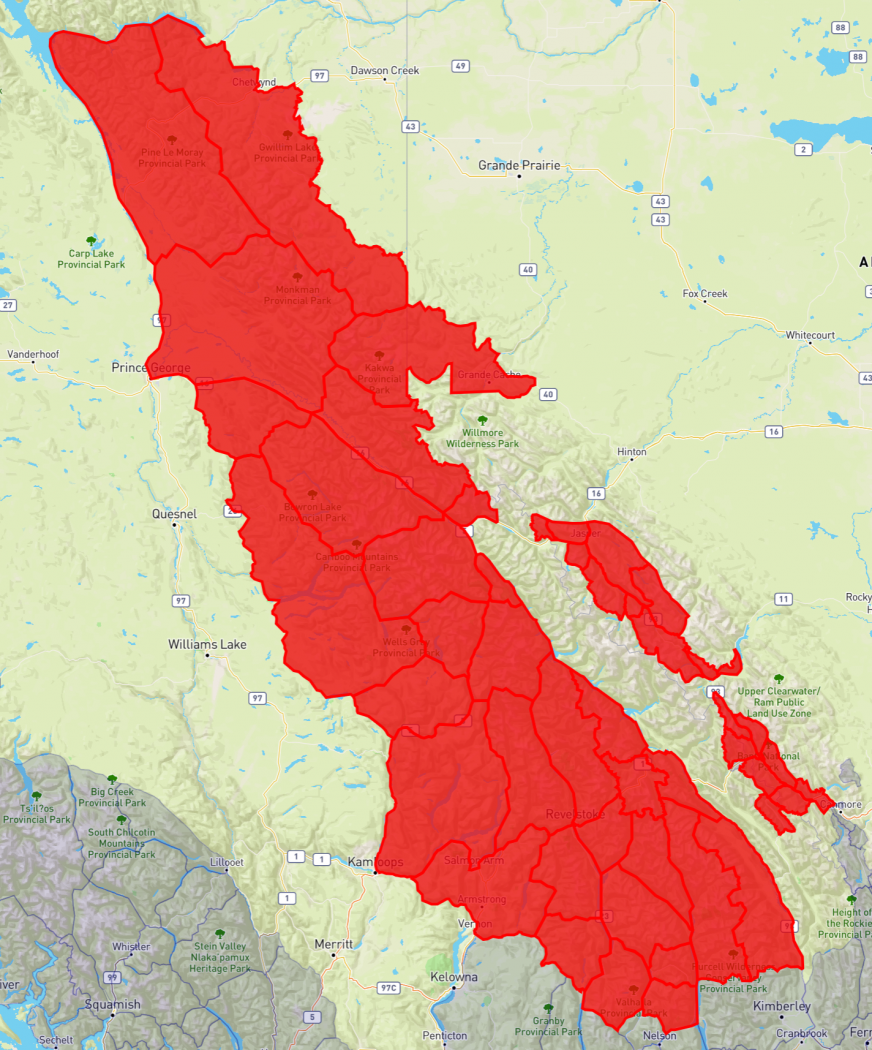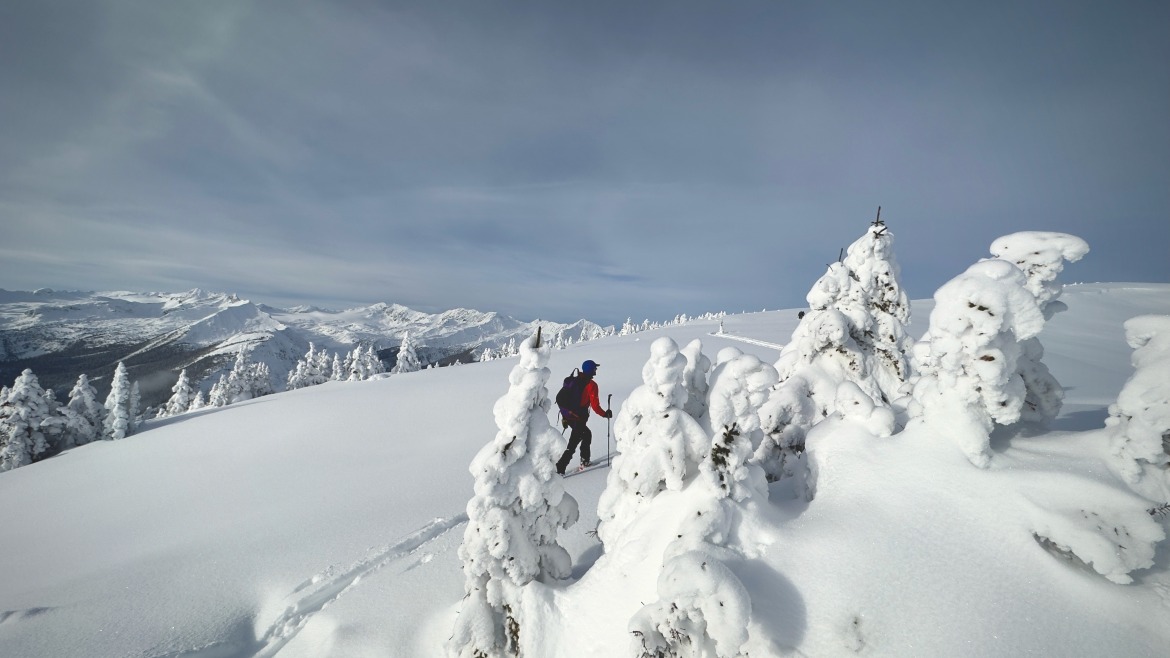Across North America, the snowpack is proving touchy. As January opens up, it remains a time to be cautious and vigilant in the backcountry.
Canadian backcountry hut life filled my week from Dec. 30th through Jan. 6th. There was quietude. There was excellent snow.
Backtrack to Dec. 28th. While driving between Radium Hot Springs and Golden, B.C., an unsettling warning piped through the radio — Avalanche Canada had issued a Special Public Avalanche Warning (SPAW) for much of B.C.’s interior.
“The SPAW region includes most of B.C.’s Columbia Mountains, Glacier and Mount Revelstoke National Parks, as well as the Northern Rockies,” states Avalanche Canada’s warning. “It now also includes Banff, Yoho, Kootenay and Jasper National Parks. The SPAW extends from the southern boundaries of the Purcell Wilderness Conservancy and Kokanee and Valhalla Provincial Parks to Williston Lake north of Pine Pass and Mackenzie.”

Regions included in the SPAW from Avalanche Canada: December 28 until the end of Monday, January 2. Image: Avalanche Canada.
The message was clear: be conservative in terrain choice and be vigilant. That message was received and applied for the six-day hut trip, which was guided.
Each day our group did receive information regarding regional skier-related avalanches. With cell service at the hut, and a large contingent of Colorado skiers present, news also came in about the 12/31 fatal avalanche the CAIC documents as Number 5, Carter Gulch southwest of Breckenridge.
Like many readers, I’m drawn to avalanche reports as an educational resource. I know I’ve made mistakes in the past. And I’m certain I’ve gotten lucky on several occasions too. But poking the bear is not my habit. Still, I want to learn from others and their experiences. The massive bummer is that since 12/26/22, Colorado has seen four avalanche fatalities. According to the CAIC, there have been six avalanche-related deaths within the U.S. this season (1 skier, 1 snowboarder, 3 snowmobilers, and 1 categorized as “other”).
At WildSnow, as with many good media outlets celebrating outdoor pursuits, we balance showcasing the cutting-edge with the grounded realities of risk mitigation. A broad survey of avalanche centers illustrates a touchy snowpack in many zones. On Avalanche.org, there are plenty of considerable and high ratings.
Please support your local avalanche center. Take a moment to read the many thorough accident reports available online and the forecast discussions when you head into the backcountry.
Jason Albert comes to WildSnow from Bend, Oregon. After growing up on the East Coast, he migrated from Montana to Colorado and settled in Oregon. Simple pleasures are quiet and long days touring. His gray hair might stem from his first Grand Traverse in 2000 when rented leather boots and 210cm skis were not the speed weapons he had hoped for. Jason survived the transition from free-heel kool-aid drinker to faster and lighter (think AT), and safer, are better.

